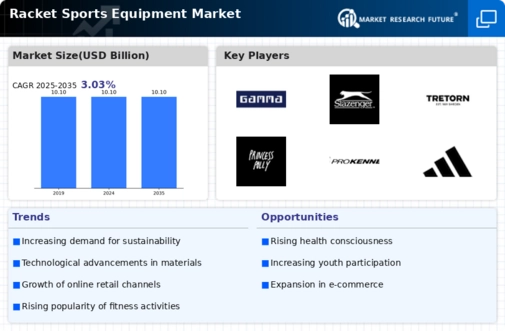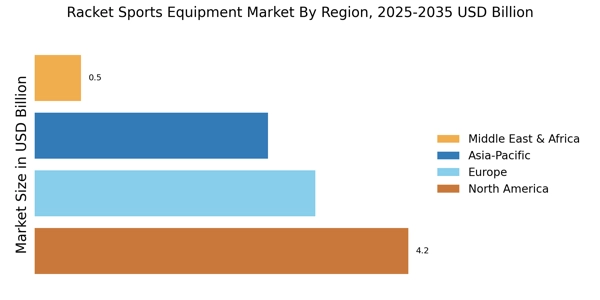The competitive insights of the Racket Sports Equipment Market reveal a dynamic environment characterized by diverse product offerings, evolving consumer preferences, and robust innovation. As the market continues to expand, numerous players focus on enhancing their technological capabilities and establishing brand loyalty through strategic partnerships and marketing initiatives.
The market is segmented into various categories, such as badminton, tennis, squash, and racquetball, making it imperative for companies to distinguish themselves through quality, performance, and design. The ongoing trend of sports participation globally, including at grassroots and professional levels, contributes significantly to the growth of this sector, prompting companies to invest in research and development to cater to changing consumer needs.
Gamma holds a strong position within the Racket Sports Equipment Market, recognized for its commitment to producing high-performance racket technologies that cater to both amateur and professional players. One of Gamma's notable strengths lies in its innovative approach to product development, constantly introducing new materials and designs that enhance player performance and comfort.
The company has built a reputation for providing extensive customization options, allowing players to select racket specifications that align with their unique playing styles.
Moreover, Gamma's marketing strategy emphasizes educating consumers about the benefits of their products, thereby fostering a loyal customer base. Their robust distribution network ensures visibility and product availability across various channels, enhancing market penetration and reinforcing their leadership in the racket sports segment.
Slazenger, another pivotal player in the Racket Sports Equipment Market, has cultivated a legacy of quality and performance that resonates with sports enthusiasts. Known for its heritage and longstanding reputation within racket sports, Slazenger excels in delivering products that combine tradition with modern technology.
The company leverages its brand equity to capture diverse market segments, appealing not only to seasoned professionals but also to newcomers in the sport. Slazenger's strengths encompass an extensive portfolio of products that include tennis rackets and accessories recognized for their durability and superior craftsmanship.
The brand actively engages in sponsorship of tournaments and associations, reinforcing its connection to the sports community and enhancing its visibility among consumers. With a focus on maintaining high standards of quality and service, Slazenger continues to solidify its presence in the competitive landscape of racket sports, contributing to the overall growth of the market.


















Leave a Comment